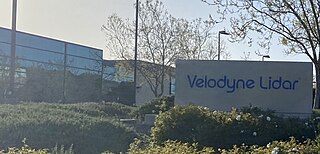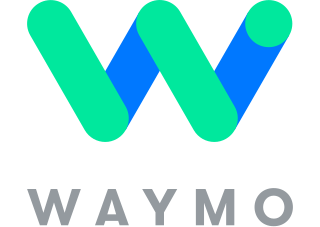
Vehicular automation involves the use of mechatronics, artificial intelligence, and multi-agent systems to assist the operator of a vehicle. These features and the vehicles employing them may be labeled as intelligent or smart. A vehicle using automation for difficult tasks, especially navigation, to ease but not entirely replace human input, may be referred to as semi-autonomous, whereas a vehicle relying solely on automation is called robotic or autonomous. Both of these types are instantiated in today's various self-driving cars, unmanned surface vehicles, autonomous trains, advanced airliner autopilots, drone aircraft, and planetary rovers, as well as guided rockets and missiles. After the invention of the integrated circuit, the sophistication of automation technology increased. Manufacturers and researchers subsequently added a variety of automated functions to automobiles and other vehicles. The technology involved in implementing autonomous vehicles is very expansive, ranging from technological improvements in the vehicle itself to the environment and objects around the vehicle. As the use of automated vehicles increases, they are becoming more influential in human lives. Although automated vehicles bring various benefits, they also come with various concerns. Also, there are still technological challenges that need to be overcome in order to make vehicular automation robust and scalable.

Velodyne Lidar is a Silicon Valley-based lidar technology company, headquartered in San Jose, California. It was spun off from Velodyne Acoustics in 2016. As of July 2020, the company has had about 300 customers. Velodyne Lidar ships sensors to mobility industry customers for testing and commercial use in autonomous vehicles, advanced driver assistance systems, mapping, robotics, infrastructure and smart city applications. In February 2023, the company merged with Ouster.

Waymo LLC, formerly known as the Google Self-Driving Car Project, is an American autonomous driving technology company headquartered in Mountain View, California. It is a subsidiary of Alphabet Inc., the parent company of Google.

Mobileye Global Inc. is a company developing autonomous driving technologies and advanced driver-assistance systems (ADAS) including cameras, computer chips and software. Mobileye was acquired by Intel in 2017 and went public again in 2022. Mobileye is based in Jerusalem, Israel, and also has sales and marketing offices in Midtown, Manhattan, US; Shanghai, China; Tokyo, Japan; and Düsseldorf, Germany.

The first modern patent Atonumas Vehicles was invented by William L Kelley in 1990 ie. Collision Predicting and Avoiding Device for Moving Vehicles. #4926171
A robotaxi, also known as robo-taxi, self-driving taxi or driverless taxi, is an autonomous car operated for a ridesharing company.

Yandex Taxi is an international company owned by Russian IT-giant Yandex and that operates taxi aggregation and food tech businesses across Russia, CIS, Eastern Europe, Africa and the Middle East. The company is among the world's leading developers of self-driving technology.

NuTonomy was an MIT spin-off technology startup company that made software to build self-driving cars and autonomous mobile robots. The company was founded in 2013. In August 2016, it launched its robo-taxi service in Singapore. In October 2017, Delphi Automotive purchased the company, which then became part of the Motional autonomous driving joint venture between Aptiv and Hyundai Motor Group.

Argo AI was an autonomous driving technology company headquartered in Pittsburgh, Pennsylvania. The company was co-founded in 2016 by Bryan Salesky and Peter Rander, veterans of the Google and Uber automated driving programs. Argo AI was an independent company that built software, hardware, maps, and cloud-support infrastructure to power self-driving vehicles. Argo was mostly backed by Ford Motor Co. (2017) and the Volkswagen Group (2020).
Oxbotica is an autonomous vehicle software company, headquartered in Oxfordshire, England, and founded by Paul Newman and Ingmar Posner.

Kar-go, is an autonomous delivery vehicle, designed and built by British company, Academy of Robotics Ltd, a UK company, registered in Wales. The vehicle uses self-drive / driverless car technology to drive itself to locations where it delivers packages autonomously.

Chris Urmson is a Canadian engineer, academic, and entrepreneur known for his work on self-driving car technology. He cofounded Aurora Innovation, a company developing self-driving technology, in 2017 and serves as its CEO. Urmson was instrumental in pioneering and advancing the development of self-driving vehicles since the early 2000s.
Cruise LLC is an American self-driving car company headquartered in San Francisco, California. Founded in 2013 by Kyle Vogt and Dan Kan, Cruise tests and develops autonomous car technology. The company is a largely-autonomous subsidiary of General Motors.

A self-driving truck, also known as an autonomous truck or robo-truck, is an application of self-driving technology aiming to create trucks that can operate without human input. Alongside light, medium, and heavy-duty trucks, many companies are developing self-driving technology in semi trucks to automate highway driving in the delivery process.
Nuro, Inc. is an American robotics company based in Mountain View, California. Founded by Jiajun Zhu and Dave Ferguson, Nuro develops autonomous delivery vehicles and is the first company to receive an autonomous exemption from the National Highway Traffic Safety Administration.

Zoox, Inc. is a subsidiary of Amazon developing autonomous vehicles that provide Mobility-as-a-Service. It is headquartered in Foster City, California and has offices of operations in the San Francisco Bay Area and Seattle, Washington. Zoox sits in the Amazon Devices & Services organization alongside other Amazon units like Amazon Lab126, Amazon Alexa, and Kuiper Systems.
Pony.ai is an autonomous vehicle technology company co-located in Silicon Valley, Beijing, and Guangzhou.
Aurora Innovation, Inc., doing business as Aurora, is a self-driving vehicle technology company based in Pittsburgh, Pennsylvania. Aurora has developed the Aurora Driver, a computer system that can be integrated into cars for autonomous driving. Aurora was co-founded by Chris Urmson, the former chief technology officer of Google/Alphabet Inc.'s self-driving team, which became known as Waymo, as well as by Sterling Anderson, former head of Tesla Autopilot, and Drew Bagnell, former head of Uber's autonomy and perception team.
Motional is an American autonomous vehicle company founded in March 2020 as a joint venture between automaker Hyundai Motor Group and auto supplier Aptiv. Headquartered in Boston, Massachusetts, Motional also maintains operations in Pittsburgh, Singapore, Las Vegas, and Los Angeles. Motional began testing its newest generation of vehicles in Las Vegas, Nevada, in February 2021, and also operates vehicles in Pittsburgh and Santa Monica, California.

















